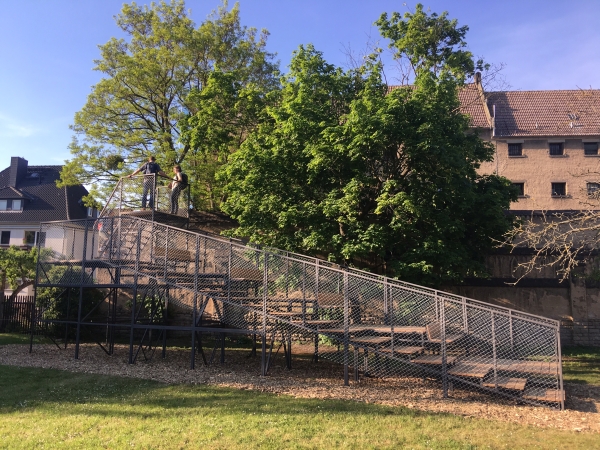Looking Back 500 Years
In: “Luther and the Avant-Garde”
19 May – 17 September 2017
Old Prison, Wittenberg, Germany
Info: luther-avantgarde.de
Since his participation in documenta X in 1997, Christian Philipp Müller, who makes use of the most varied media for his analytical investigations, has been considered one of the most important conceptual artists of the present day. He finds his themes in science, nature, art, philosophy, literature, and social observations. Müller is a “searcher of traces,” whose extensive research forms the basis of his aesthetic and formal strategies and whose projects are always located in the social realm. Many of his works are united by the aspect of communication, the active participation of the visitor, and the striving for an optimal connection between form and content. This often includes humor, lightness, and poetic elements.
For this exhibition, Müller offers residents and visitors an interactive forum. On the side of the prison, a tall, wide, but nevertheless transparent “staircase” has been installed, which visitors can climb to reach a kind of viewing platform. From here, one has a view of the prison’s inner courtyard—the artist puts the visitor in the role of the voyeur who peers over the wall and might possibly see hidden or secret things. Equally important, however, is the view in the direction of the town, and especially in the direction of the Castle Church—the site of the posting of the theses—and thus the view onto the history and impact of Luther as a reformer. Stairs, platforms, and benches provide an opportunity to rest and contemplate, and hopefully also to communicate and share impressions with others. This is complemented by the possibility of noting personal mementos, theses, reflections, and perhaps also wishes by hand onto narrow white bands and tying them onto the thin staircase construction or onto the filigree wire mesh. Like a “wishing tree”—a tradition from other countries such as Japan and India, where it is a fixed element of spirituality that influences everyday life as well as a symbol for a mediation between the individual and the divine—this “observatory/auditorium” allows visitors to express their opinions openly. Also welcome are “selfies” and their virtual dissemination on social media. During the course of the exhibition, this meeting place, inter-confessional and inter-cultural site, as well as the appearance of the sculpture itself will constantly change. As a result of this process, the transparency of the staircase will become increasingly covered by freely moving bands of varying lengths; words will fade, new thoughts will overlap old thoughts and leave traces—and in the end, there will probably be more than merely ninety-five bands waving in the wind.
Text by Susanne Kleine

